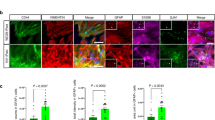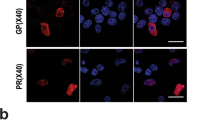Abstract
Posttranslational modifications are crucial mechanisms that modulate various cellular signaling pathways, and their dysregulation is associated with many human diseases. Spinocerebellar ataxia type 1 (SCA1) is a dominantly inherited neurodegenerative disease characterized by progressive ataxia, mild cognitive impairments, difficulty with speaking and swallowing, and respiratory failure. It is caused by the expansion of an unstable CAG trinucleotide repeat encoding a glutamine tract in Ataxin-1 (ATXN1). Although the expansion of the polyglutamine tract is the key determinant of the disease, protein domains outside of the polyglutamine tract and posttranslational modifications of ATXN1 significantly alter the neurotoxicity of SCA1. ATXN1 undergoes several posttranslational modifications, including phosphorylation, ubiquitination, sumoylation, and transglutamination. Such modifications can alter the stability of ATXN1 or its activity in the regulation of target gene expression and therefore contribute to SCA1 toxicity. This review outlines different types of posttranslational modifications in ATXN1 and discusses their potential regulatory mechanisms and effects on SCA1 pathogenesis. Finally, the manipulation of posttranslational modifications as a potential therapeutic approach will be discussed.


Similar content being viewed by others
References
Karve TM, Cheema AK (2011) Small changes huge impact: the role of protein posttranslational modifications in cellular homeostasis and disease. J Amino Acids 2011:207691
Pennuto M, Palazzolo I, Poletti A (2009) Post-translational modifications of expanded polyglutamine proteins: impact on neurotoxicity. Hum Mol Genet 18(R1):R40–R47
Ross CA (2002) Polyglutamine pathogenesis: emergence of unifying mechanisms for Huntington’s disease and related disorders. Neuron 35(5):819–822
Orr HT, Zoghbi HY (2007) Trinucleotide repeat disorders. Annu Rev Neurosci 30:575–621
Zoghbi HY, Orr HT (2009) Pathogenic mechanisms of a polyglutamine-mediated neurodegenerative disease, spinocerebellar ataxia type 1. J Biol Chem 284(12):7425–7429
Orr HT (2012) SCA1-phosphorylation, a regulator of Ataxin-1 function and pathogenesis. Prog Neurobiol 99(3):179–185
Klement IA et al (1998) Ataxin-1 nuclear localization and aggregation: role in polyglutamine-induced disease in SCA1 transgenic mice. Cell 95(1):41–53
Tsuda H et al (2005) The AXH domain of Ataxin-1 mediates neurodegeneration through its interaction with Gfi-1/senseless proteins. Cell 122(4):633–644
Emamian ES et al (2003) Serine 776 of ataxin-1 is critical for polyglutamine-induced disease in SCA1 transgenic mice. Neuron 38(3):375–387
Huttlin EL et al (2010) A tissue-specific atlas of mouse protein phosphorylation and expression. Cell 143(7):1174–1189
Burright EN et al (1995) SCA1 transgenic mice: a model for neurodegeneration caused by an expanded CAG trinucleotide repeat. Cell 82(6):937–948
Clark HB et al (1997) Purkinje cell expression of a mutant allele of SCA1 in transgenic mice leads to disparate effects on motor behaviors, followed by a progressive cerebellar dysfunction and histological alterations. J Neurosci 17(19):7385–7395
Duvick L et al (2010) SCA1-like disease in mice expressing wild-type ataxin-1 with a serine to aspartic acid replacement at residue 776. Neuron 67(6):929–935
Lim J et al (2008) Opposing effects of polyglutamine expansion on native protein complexes contribute to SCA1. Nature 452(7188):713–718
Chen HK et al (2003) Interaction of Akt-phosphorylated ataxin-1 with 14-3-3 mediates neurodegeneration in spinocerebellar ataxia type 1. Cell 113(4):457–468
Lam YC et al (2006) ATAXIN-1 interacts with the repressor Capicua in its native complex to cause SCA1 neuropathology. Cell 127(7):1335–1347
Bolger TA et al (2007) The neurodegenerative disease protein ataxin-1 antagonizes the neuronal survival function of myocyte enhancer factor-2. J Biol Chem 282(40):29186–29192
de Chiara C et al (2009) Phosphorylation of S776 and 14-3-3 binding modulate ataxin-1 interaction with splicing factors. PLoS One 4(12):e8372
Umahara T, Uchihara T (2010) 14-3-3 proteins and spinocerebellar ataxia type 1: from molecular interaction to human neuropathology. Cerebellum 9(2):183–189
Lai S et al (2011) 14-3-3 binding to ataxin-1(ATXN1) regulates its dephosphorylation at Ser-776 and transport to the nucleus. J Biol Chem 286(40):34606–34616
Jafar-Nejad P et al (2011) Regional rescue of spinocerebellar ataxia type 1 phenotypes by 14-3-3epsilon haploinsufficiency in mice underscores complex pathogenicity in neurodegeneration. Proc Natl Acad Sci U S A 108(5):2142–2147
Bowman AB et al (2007) Duplication of Atxn1l suppresses SCA1 neuropathology by decreasing incorporation of polyglutamine-expanded ataxin-1 into native complexes. Nat Genet 39(3):373–379
Fryer JD et al (2011) Exercise and genetic rescue of SCA1 via the transcriptional repressor Capicua. Science 334(6056):690–693
She H, Mao Z (2011) Regulation of myocyte enhancer factor-2 transcription factors by neurotoxins. Neurotoxicology 32(5):563–566
Jorgensen ND et al (2009) Phosphorylation of ATXN1 at Ser776 in the cerebellum. J Neurochem 110(2):675–686
Hearst SM et al (2010) Dopamine D2 receptor signaling modulates mutant ataxin-1 S776 phosphorylation and aggregation. J Neurochem 114(3):706–716
Goold R et al (2007) Down-regulation of the dopamine receptor D2 in mice lacking ataxin 1. Hum Mol Genet 16(17):2122–2134
Park J et al (2013) RAS-MAPK-MSK1 pathway modulates ataxin 1 protein levels and toxicity in SCA1. Nature 498(7454):325–331
Sanchez I et al (2013) A novel function of Ataxin-1 in the modulation of PP2A activity is dysregulated in the spinocerebellar ataxia type 1. Hum Mol Genet 22(17):3425–3437
Ahn JH et al (2007) Protein kinase A activates protein phosphatase 2A by phosphorylation of the B56delta subunit. Proc Natl Acad Sci U S A 104(8):2979–2984
Cvetanovic M, Kular RK, Opal P (2012) LANP mediates neuritic pathology in Spinocerebellar ataxia type 1. Neurobiol Dis 48(3):526–532
Kular RK et al (2009) Neuronal differentiation is regulated by leucine-rich acidic nuclear protein (LANP), a member of the inhibitor of histone acetyltransferase complex. J Biol Chem 284(12):7783–7792
Opal P et al (2003) Mapmodulin/leucine-rich acidic nuclear protein binds the light chain of microtubule-associated protein 1B and modulates neuritogenesis. J Biol Chem 278(36):34691–34699
Vierra-Green CA et al (2005) Identification of a novel phosphorylation site in ataxin-1. Biochim Biophys Acta 1744(1):11–18
Ju H et al (2013) Polyglutamine disease toxicity is regulated by Nemo-like kinase in spinocerebellar ataxia type 1. J Neurosci 33(22):9328–9336
Lim J et al (2006) A protein-protein interaction network for human inherited ataxias and disorders of Purkinje cell degeneration. Cell 125(4):801–814
Choi KW, Benzer S (1994) Rotation of photoreceptor clusters in the developing Drosophila eye requires the nemo gene. Cell 78(1):125–136
Banfi S et al (1996) Identification and mapping of human cDNAs homologous to Drosophila mutant genes through EST database searching. Nat Genet 13(2):167–174
Brott BK, Pinsky BA, Erikson RL (1998) Nlk is a murine protein kinase related to Erk/MAP kinases and localized in the nucleus. Proc Natl Acad Sci U S A 95(3):963–968
Meneghini MD et al (1999) MAP kinase and Wnt pathways converge to downregulate an HMG-domain repressor in Caenorhabditis elegans. Nature 399(6738):793–797
Todd TW, Lim J (2013) Aggregation formation in the polyglutamine diseases: protection at a cost? Mol Cells 36(3):185–194
Cummings CJ et al (1999) Mutation of the E6-AP ubiquitin ligase reduces nuclear inclusion frequency while accelerating polyglutamine-induced pathology in SCA1 mice. Neuron 24(4):879–892
Hong S et al (2008) UbcH6 interacts with and ubiquitinates the SCA1 gene product ataxin-1. Biochem Biophys Res Commun 371(2):256–260
Lee S, Hong S, Kang S (2008) The ubiquitin-conjugating enzyme UbcH6 regulates the transcriptional repression activity of the SCA1 gene product ataxin-1. Biochem Biophys Res Commun 372(4):735–740
Lin X et al (2000) Polyglutamine expansion down-regulates specific neuronal genes before pathologic changes in SCA1. Nat Neurosci 3(2):157–163
Serra HG et al (2004) Gene profiling links SCA1 pathophysiology to glutamate signaling in Purkinje cells of transgenic mice. Hum Mol Genet 13(20):2535–2543
Cvetanovic M et al (2011) Vascular endothelial growth factor ameliorates the ataxic phenotype in a mouse model of spinocerebellar ataxia type 1. Nat Med 17(11):1445–1447
Cvetanovic M et al (2007) The role of LANP and ataxin 1 in E4F-mediated transcriptional repression. EMBO Rep 8(7):671–677
Crespo-Barreto J et al (2010) Partial loss of ataxin-1 function contributes to transcriptional dysregulation in spinocerebellar ataxia type 1 pathogenesis. PLoS Genet 6(7):e1001021
Gatchel JR et al (2008) The insulin-like growth factor pathway is altered in spinocerebellar ataxia type 1 and type 7. Proc Natl Acad Sci U S A 105(4):1291–1296
Qian SB et al (2006) CHIP-mediated stress recovery by sequential ubiquitination of substrates and Hsp70. Nature 440(7083):551–555
McDonough H, Patterson C (2003) CHIP: a link between the chaperone and proteasome systems. Cell Stress Chaperones 8(4):303–308
Al-Ramahi I et al (2006) CHIP protects from the neurotoxicity of expanded and wild-type ataxin-1 and promotes their ubiquitination and degradation. J Biol Chem 281(36):26714–26724
Cummings CJ et al (1998) Chaperone suppression of aggregation and altered subcellular proteasome localization imply protein misfolding in SCA1. Nat Genet 19(2):148–154
Hipp MS et al (2005) FAT10, a ubiquitin-independent signal for proteasomal degradation. Mol Cell Biol 25(9):3483–3491
Davidson JD et al (2000) Identification and characterization of an ataxin-1-interacting protein: A1Up, a ubiquitin-like nuclear protein. Hum Mol Genet 9(15):2305–2312
Riley BE, Zoghbi HY, Orr HT (2005) SUMOylation of the polyglutamine repeat protein, ataxin-1, is dependent on a functional nuclear localization signal. J Biol Chem 280(23):21942–21948
Flotho A, Melchior F (2013) Sumoylation: a regulatory protein modification in health and disease. Annu Rev Biochem 82:357–385
Ueda H et al (2002) Enhanced SUMOylation in polyglutamine diseases. Biochem Biophys Res Commun 293(1):307–313
Dorval V, Fraser PE (2007) SUMO on the road to neurodegeneration. Biochim Biophys Acta 1773(6):694–706
Pountney DL et al (2003) SUMO-1 marks the nuclear inclusions in familial neuronal intranuclear inclusion disease. Exp Neurol 184(1):436–446
Kang S, Hong S (2010) SUMO-1 interacts with mutant ataxin-1 and colocalizes to its aggregates in Purkinje cells of SCA1 transgenic mice. Arch Ital Biol 148(4):351–363
Ryu J et al (2010) Oxidative stress-enhanced SUMOylation and aggregation of ataxin-1: implication of JNK pathway. Biochem Biophys Res Commun 393(2):280–285
Lorand L, Graham RM (2003) Transglutaminases: crosslinking enzymes with pleiotropic functions. Nat Rev Mol Cell Biol 4(2):140–156
Kahlem P et al (1996) Peptides containing glutamine repeats as substrates for transglutaminase-catalyzed cross-linking: relevance to diseases of the nervous system. Proc Natl Acad Sci U S A 93(25):14580–14585
Cooper AJ et al (1997) Polyglutamine domains are substrates of tissue transglutaminase: does transglutaminase play a role in expanded CAG/poly-Q neurodegenerative diseases? J Neurochem 69(1):431–434
Lai TS et al (2004) Effect of tissue transglutaminase on the solubility of proteins containing expanded polyglutamine repeats. J Neurochem 88(5):1253–1260
Bailey CD, Tucholski J, Johnson GV (2005) Transglutaminases in neurodegenerative disorders. Prog Exp Tumor Res 38:139–157
Karpuj MV et al (1999) Transglutaminase aggregates huntingtin into nonamyloidogenic polymers, and its enzymatic activity increases in Huntington’s disease brain nuclei. Proc Natl Acad Sci U S A 96(13):7388–7393
Zainelli GM et al (2004) Calmodulin regulates transglutaminase 2 cross-linking of huntingtin. J Neurosci 24(8):1954–1961
Mandrusiak LM et al (2003) Transglutaminase potentiates ligand-dependent proteasome dysfunction induced by polyglutamine-expanded androgen receptor. Hum Mol Genet 12(13):1497–1506
Kahlem P, Green H, Djian P (1998) Transglutaminase action imitates Huntington’s disease: selective polymerization of Huntingtin containing expanded polyglutamine. Mol Cell 1(4):595–601
Maggio N et al (2001) Tissue-transglutaminase in rat and human brain: light and electron immunocytochemical analysis and in situ hybridization study. Brain Res Bull 56(3–4):173–182
D'Souza DR et al (2006) Tissue transglutaminase crosslinks ataxin-1: possible role in SCA1 pathogenesis. Neurosci Lett 409(1):5–9
Vig PJ et al (2007) Role of tissue transglutaminase type 2 in calbindin-D28k interaction with ataxin-1. Neurosci Lett 420(1):53–57
Acknowledgments
We are grateful to the members of the Lim laboratory for their thoughtful comments on the manuscript and Tiffany Todd for editorial input. This work was generously supported by the National Institute of Neurological Disorders and Stroke grant NS064146, National Ataxia Foundation, Brain & Behavior Research Foundation (Formerly NARSAD), Alfred P. Sloan Foundation, Charles H. Hood Foundation, National Multiple Sclerosis Society, and Yale Scholar Award Program to J. Lim.
Author information
Authors and Affiliations
Corresponding author
Additional information
Hyoungseok Ju and Hiroshi Kokubu contributed equally to this work.
Rights and permissions
About this article
Cite this article
Ju, H., Kokubu, H. & Lim, J. Beyond the Glutamine Expansion: Influence of Posttranslational Modifications of Ataxin-1 in the Pathogenesis of Spinocerebellar Ataxia Type 1. Mol Neurobiol 50, 866–874 (2014). https://doi.org/10.1007/s12035-014-8703-z
Received:
Accepted:
Published:
Issue Date:
DOI: https://doi.org/10.1007/s12035-014-8703-z




